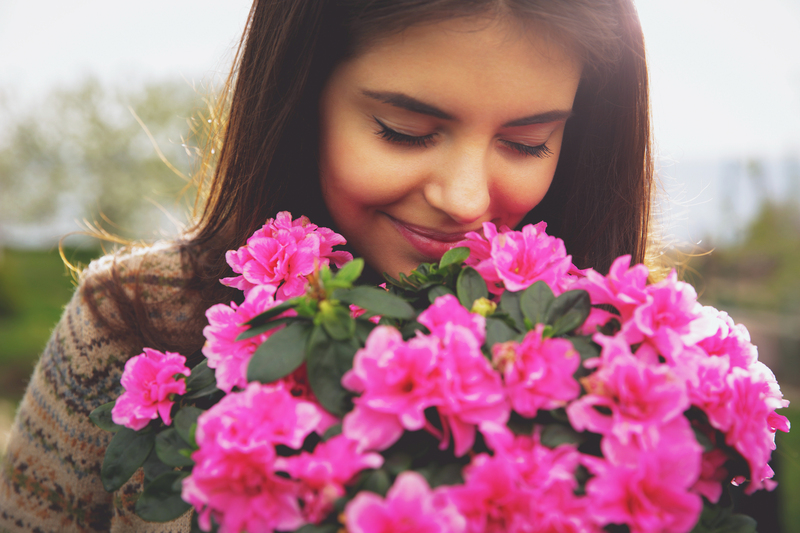Ensure Lush Bloom with These Hydrangea Care Tips
Posted on 10/09/2025
Ensure Lush Bloom with These Hydrangea Care Tips
Hydrangeas are beloved garden shrubs celebrated for their captivating, globe-like blossoms and their ability to transform any landscape into a vibrant paradise. With their enchanting shades--ranging from dreamy blues and pinks to creamy whites and even lime greens--achieving lush hydrangea blooms is a goal for many gardeners. Whether you're a seasoned green thumb or just discovering the joys of ornamental gardening, this comprehensive hydrangea care guide will help you cultivate stunning, flourishing hydrangeas all season long.
Understanding Hydrangea Varieties
Before diving into hydrangea care tips, it's crucial to understand that not all hydrangeas are the same. Different varieties require slightly different care. The most common types include:
- Hydrangea macrophylla (Bigleaf Hydrangea): Famous for their large, mophead flowers in pink, blue, or purple.
- Hydrangea paniculata (Panicle Hydrangea): Known for their cone-shaped white or pink flower clusters and high sun tolerance.
- Hydrangea arborescens (Smooth Hydrangea): Features round, white blooms--'Annabelle' is a popular variety.
- Hydrangea quercifolia (Oakleaf Hydrangea): Recognized by their oak-shaped leaves and white, cone-shaped flowers.
- Hydrangea serrata (Mountain Hydrangea): Smaller cousin to bigleaf hydrangeas, hardy and compact.
Selecting the right hydrangea for your zone and landscape preferences will ensure a success-filled growing season.

The Secret to Planting Hydrangeas for Vibrant Blooms
Choosing the Ideal Location
Location matters! Hydrangeas bloom best when planted in an area that provides morning sunlight and afternoon shade. While Hydrangea paniculata tolerates more direct sunlight, most varieties prefer shelter from harsh midday rays, which can scorch their delicate leaves and result in less prolific blooming.
- Seek spots with dappled light beneath tall trees or on the east/north side of buildings.
- Avoid low areas where cold air settles, which can damage flower buds in spring.
Soil Preparation
Well-draining soil is a must for healthy hydrangea growth. Incorporate plenty of organic matter such as compost, peat moss, or well-rotted manure to improve texture and fertility.
- pH Levels: The color of certain hydrangeas (especially bigleaf) will depend on soil pH. Acidic soils (pH below 6) produce blue flowers, while alkaline soils (pH above 7) yield pink blooms. Occasionally, you may even see purple hues at intermediate pH!
- Test your soil and adjust it with sulfur (to lower pH) or lime (to raise pH) as needed.
Proper Planting Techniques
To ensure lush hydrangea flowers, it's vital to plant them correctly:
- Dig a hole that's twice as wide as the root ball and just as deep.
- Place the hydrangea so the top of the root ball is level with the surrounding soil.
- Backfill, then water thoroughly to settle the roots in.
- Add a 2-3 inch layer of mulch to retain moisture and regulate temperature.
Watering Wisdom: Keep Your Hydrangeas Hydrated
Hydrangeas are naturally thirsty shrubs. Proper watering is one of the best ways to ensure abundant hydrangea blooms throughout the warm months.
- Consistent Moisture: Keep soil consistently moist, but not waterlogged. Hydrangeas wilt quickly when thirsty but recover once hydrated.
- Deep Soakings: Water deeply, 1-2 times a week instead of quick daily sprinkles. Deep watering encourages roots to grow down, reducing drought stress.
- Morning is Best: Water early in the day to reduce evaporation and give plants time to dry out, helping prevent fungal diseases.
Feeding for Fabulous Blooms: Hydrangea Fertilization Tips
Feeding your hydrangeas the right nutrients ensures explosive flower production and rich green foliage. Here's how to get it right:
Best Fertilizers for Hydrangeas
- Use a balanced, slow-release fertilizer (like 10-10-10) in early spring as new growth begins.
- Alternatively, incorporate organic compost or well-rotted manure around the base to feed the soil naturally.
- For bigleaf hydrangeas, adjusting fertilizer can tweak blooms: more phosphorus enhances pinks, more aluminum boosts blues.
Application Tips
- Spread fertilizer evenly under the canopy, avoiding direct contact with stems and leaves.
- Water in thoroughly for nutrient absorption.
- Reapply light feedings in late spring if needed, but avoid over-fertilizing, which can encourage leafy growth at the expense of blooms.
Pruning Techniques to Ensure Lush Hydrangea Bloom
When and how you prune directly impacts the quality and quantity of hydrangea blooms. The right method depends on your hydrangea species:
Bigleaf and Mountain Hydrangea Pruning
- These types bloom on old wood (growth from the previous year).
- Prune right after flowering, before next year's buds form in late summer.
- Remove spent flowers, weak stems, and any winter-damaged canes.
Panicle and Smooth Hydrangea Pruning
- These varieties flower on new wood (current season's growth).
- Prune in late winter or early spring before new growth appears.
- Cut back old stems to a pair of healthy buds low on the plant for fuller, bushier flowering.
General Pruning Tips
- Always use clean, sharp shears to avoid disease transmission.
- Avoid drastic pruning unless rejuvenating older, declining plants.
- Don't prune hydrangeas indiscriminately--knowing your variety is essential!
Troubleshooting Common Hydrangea Problems
Even with the best hydrangea care practices, issues can arise. Here's how to identify and solve common problems:
Poor or No Blooms
- Too Much Shade: Move or thin out trees to increase sunlight exposure.
- Improper Pruning: Pruning at the wrong time removes flower buds. Research your variety before cutting.
- Late Frost: Spring cold snaps can kill flower buds; use frost covers when late freezes threaten.
Wilting or Burnt Leaves
- Hydrangea leaves wilt in hot weather or due to underwatering.
- Sunscald causes browning edges--try relocating to shadier spots if possible.
Yellow Leaves or Poor Growth
- Indicates overwatering, poor drainage, or nutrient deficiencies. Check soil moisture and feed appropriately.
- Use acidity amendments for pH imbalance if you see unexpected flower colors or leaf chlorosis.
Special Tips for Maximizing Hydrangea Blooms
- Mulch generously: Retain soil moisture, suppress weeds, and regulate temperature with a thick mulch layer each spring.
- Deadhead blooms: Remove spent flowers through the season to encourage continued blooming--just don't cut into new buds for the following year.
- Monitor for pests and diseases: Aphids, spider mites, powdery mildew, and leaf spots are occasional issues. Treat promptly with insecticidal soap or fungicide when needed.
- Winter protection: In colder climate zones, wrap stems with burlap or insulate with leaves to shield buds from freezing temperatures.
- Hydrangea color experiments: For bigleaf types, have fun changing pink to blue or vice versa by adjusting your soil's pH with amendments or tested hydrangea colorants.

Hydrangea Care FAQs
How can I keep my hydrangeas blooming through summer?
Consistent watering, regular feeding, light deadheading, and avoiding deep pruning after midsummer will keep your hydrangeas flowering reliably.
Should I fertilize hydrangeas after flowering?
Light applications of organic fertilizer or compost in late summer can help strengthen the plant, but avoid strong chemical fertilizers late in the season, which may encourage soft growth prone to winter damage.
Why aren't my hydrangeas blooming?
The most common causes are pruning at the wrong time (removing flower buds), excessive shade, winter bud damage, or nutrient imbalance.
What's the best soil for hydrangeas?
Well-draining, organically rich soil with a preference for a slightly acidic to neutral pH is ideal for most hydrangea varieties.
Conclusion: Lush Hydrangea Blooms Are Within Your Reach!
Cultivating lush hydrangea blooms isn't difficult--it just takes some thoughtful care.
Remember these key points for thriving hydrangeas:
- Choose the right hydrangea for your garden's sunlight and climate.
- Plant in compost-rich, well-draining soil and mulch annually.
- Water consistently, especially during droughts.
- Feed with balanced fertilizers and monitor soil pH for color control.
- Prune at the correct time for your hydrangea type.
- Address problems promptly and protect from frost if necessary.
With these proven hydrangea care tips, you'll ensure lush, beautiful blooms and healthy, vigorous shrubs that are the envy of the neighborhood all season long!
Looking for More Gardening Wisdom?
Bookmark this guide and check back for more expert advice on garden care and blooming success! Your hydrangeas will thank you with a showstopping display each year.







